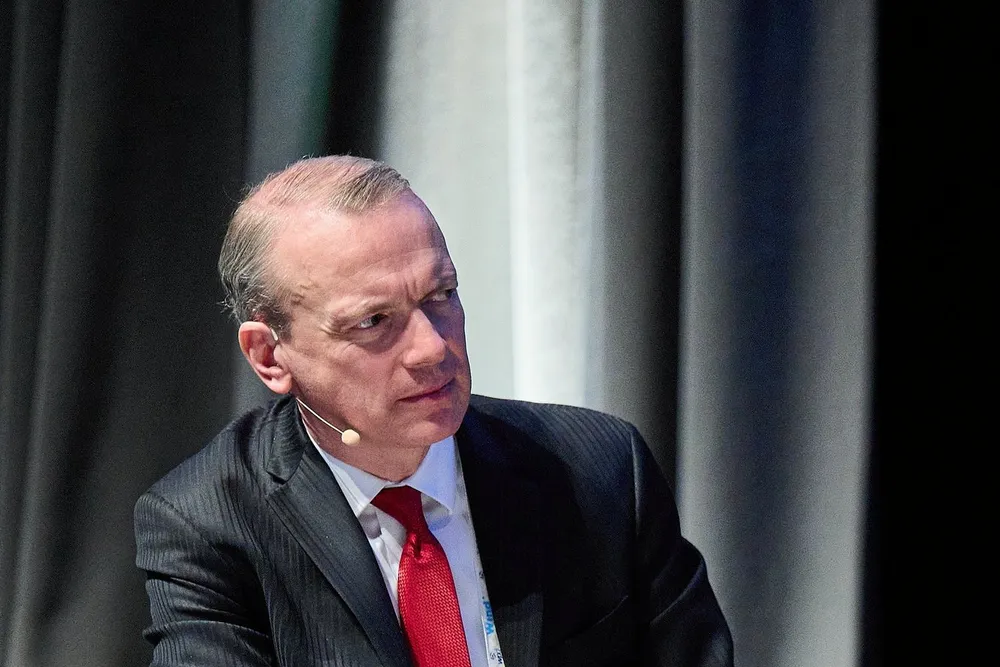Dickson spells out big new challenge facing next WindEurope CEO
Head of industry body says disinformation, cyber and physical attacks growing issue for sector as he prepares to hand over to successor

Giles Dickson says his successor as WindEurope CEO will face new challenges in helping the industry to combat threats from Russia – whether in the form of misinformation, cyberattacks or physical threats in European seas.
After his exit by the end of the year his replacement’s in-tray of priorities will feature the type of policy challenges that Dickson has wrestled with for a decade in the top job – project permitting, grids, effective auction mechanisms and the like.
“There is a big new challenge which we’re spending much more time on in WindEurope than we ever did, and that is tackling misinformation and disinformation,” he said.
“We’re putting resources into trying to get to the heart of where the disinformation is coming from” and how to combat it.
Where does he think the misinformation is coming from? “Nation states,” with vested interests in the failure of renewable energy in Europe, Dickson responded, agreeing that Russia is a particular cause for concern.
“Our goal is to put in place rapid rebuttal resources, which we will use as the association and make available for the whole industry. And a lot of large companies are doing things here themselves. We're trying to pull all the best practice and resources that are out there across the industry.”
As well as the disinformation, Dickson flagged the cybersecurity threat to European wind and “ships, usually Russian ships, dragging their anchors across cables”.
WindEurope for the first time over the last year has employed two former military defence and security advisers, he added. “The need for WindEurope effort in that area isn’t going to diminish.”
'Everybody aligned on the need to expand wind'
Combating the threat from Russia is one area likely to easily unite the diverse range of interests that make up WindEurope, which all need to feel they are being represented effectively by the body.
That was a worry when he joined the industry group in 2015 from Alstom, Dickson admitted.
“I wondered whether you would have a divergence of opinion between the onshore players and the offshore players. Would you have divergence of opinion between the wind pure plays and the companies that are doing wind and other types of energy?
“But everybody is aligned on the need to expand wind energy. And they're aligned also on how you get there, by and large.”
Dickson responds that even developers open to Chinese machines “agree that it's essential that European manufacturers should be competing on a level playing field with their non-European competitors.
“So, the association is fully aligned on that. And there is agreement across the association also, that you've got to ensure high levels of cybersecurity and data security.”
When you add holding the line over issues like China to juggling the priorities of a host of national markets, from giants such as Germany to minnows such as the Baltic states, and navigating the notoriously windy policy corridors of the EU, the WindEurope hotseat becomes positively scorching.
Along the way, Dickson has also represented the industry through global shocks such as Covid and the Russian invasion of Ukraine. The latter was instrumental in propelling the issue of energy security, rather than climate change, to the centre of the policy agenda.
The reaction from the industry to Dickson’s departure – both publicly and in private – suggests he will be remembered as a success. What does he count as the biggest positive from his 10 years?
Dickson pointed out that most of the resulting actions from the package actually fell to national governments. “We got 26 out of 27 of them on board. They all signed up to the European Wind Charter, along with 300 companies in the wind industry, two months after the package had come out. So that was a major moment.”
The outgoing CEO is also happy to have overseen the expansion – both in size and influence – of the WindEurope annual event, held alternately in Spain and Denmark and which is now a key destination for top policymakers and financiers as well as the wind industry’s own players.
Dickson will leave WindEurope by the end of the year to return to his native UK and a new beginning as a schoolteacher.
“This [teaching] is something that I have long wanted to do. You get to a certain point, 10 years, it's a milestone.” At 58 years old “you just feel now is the time”.
(Copyright)